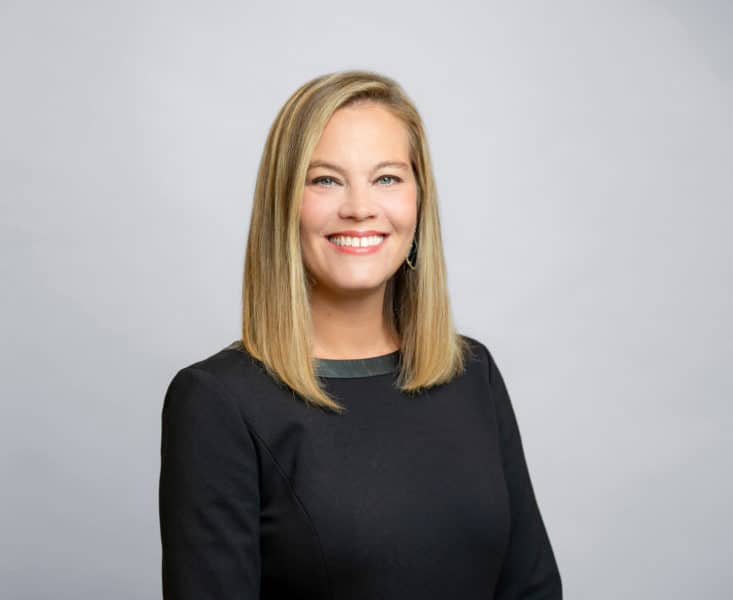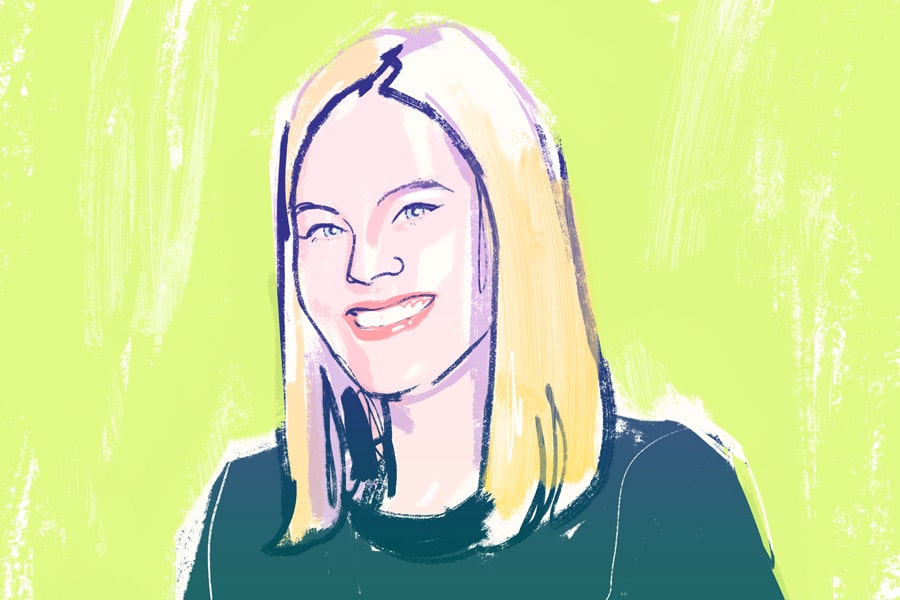Illustrated by Jonny Ruzzo
Armed with a degree in construction from Virginia Tech, Kim Roy was hired in 1999 by HITT Contracting in Falls Church, Virginia, and never left. In 2017, Roy was appointed the 84-year-old company’s first non-family-member CEO. She is also the only female CEO on the Engineering News-Record’s list of 100 largest contractors in the United States.
Roy leads the company’s strategic planning and corporate steering committees and provides executive oversight for corporate operations, including HR, finance and risk management. She is also president and member of the board of HITT Holding Corp., HITT Contracting’s parent company.
The Built Blog spoke with Roy about the pressing issues in the construction industry and what keeps her up at night. Edited excerpts follow.
Built Blog: How did you choose the construction industry?
Roy: When I was a little girl, after church on Sundays, my mom would take my siblings and me to get chocolate doughnuts after church and then we’d go look at model homes for fun. That really sparked my interest in being a builder. From there, I took drafting classes in high school and building construction in college, and that really set me on my path in this industry.

Built Blog: Who inspired you to work in the industry and why?
Roy: A lot of career interest is generational, but in my case it was not. My father was in law enforcement and my mom was a librarian, so being in those model homes was how things came together for me. As far as current inspiration, I look to a lot of our tech leaders—Bezos, Musk, even Whitney Herd, founder and CEO of Bumble, the social media and dating app. I also love to read, and lately I’m into culture books and studies because it’s important to me and HITT that people feel valued and heard. Culture books are also providing inspiration.
Built Blog: What advice do you have for people looking to follow in your career footsteps?
Roy: Young people have an innate enthusiasm. I would tell them follow your passion. Hone your communication skills. Get the basics right; there’s no fast track to understanding all the unique elements that go into building construction. My most important piece of advice is to have the courage to get out of your comfort zone. Some of the biggest leadership leaps I’ve had took place when I was very uncomfortable. Now, as a leader, it’s all about empowering others.
Built Blog: What’s your favorite part of the job?
Roy: Early on, my first 10 years or so in the industry, my favorite part was seeing a set of plans turn into a beautiful, finished product. I’d be proud of creating something very tangible. Now my favorite part is coaching team members into leadership positions and empowering others.
Built Blog: What’s the best advice you ever got about this industry?
Roy: I was intimidated the first time I was out on a jobsite, but I asked a lot of questions and really listened to the trade superintendents and foreman. They were proud to show me their work and explain the details. It helped grow my confidence. As an executive, the best advice I have gotten is don’t shy away from people who challenge you.
Built Blog: What do you think is the most pressing issue facing the construction industry and why?
Roy: At a high level, accepting the status quo. If you don’t have a team that’s focused on evolution such as digital transformation and R&D, you’re going to be in trouble as a company. Our clients don’t want to pay for rising construction costs, and it’s our job to provide value and an exceptional experience, and we have to challenge the status quo.
[RELATED: What Construction Might Look Like Post-Pandemic]
Built Blog: What keeps you up at night as an executive, and how do you structure your time to fix the most important issues you face in your role?
Roy: First and foremost, what keeps me up at night is the safety and health of our team members and anyone who comes to our project sites. Increasingly, this includes their mental health and well-being. Coming out of this pandemic, this has been a heightened concern. The issues that come up at night all relate to people; they’re the tough ones.
Regarding how I structure my time, the thing I want most in life is more time, so I carefully guard my time and prioritize things that are important to me. In the big picture, that’s my family and loved ones. I’m good at setting healthy boundaries. From a work standpoint, I structure my time to focus on things that are forward-facing, and I try to think way ahead. In the past, I focused more on day-to-day things and putting out fires. Now I know it’s more important that I lead toward a long-term aspirational strategy.












